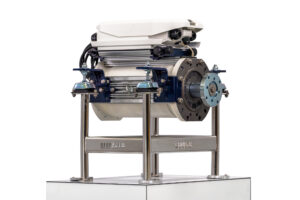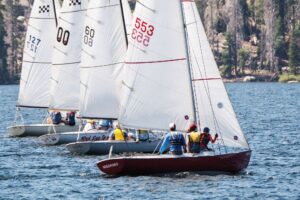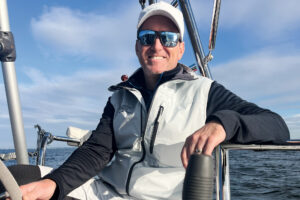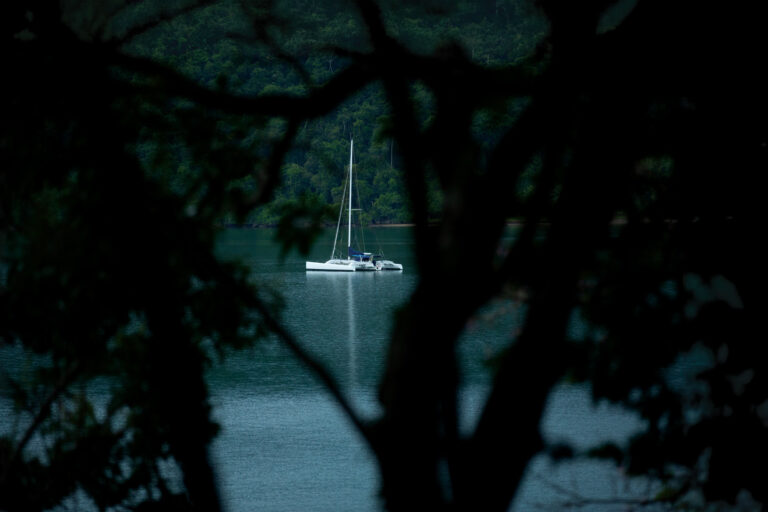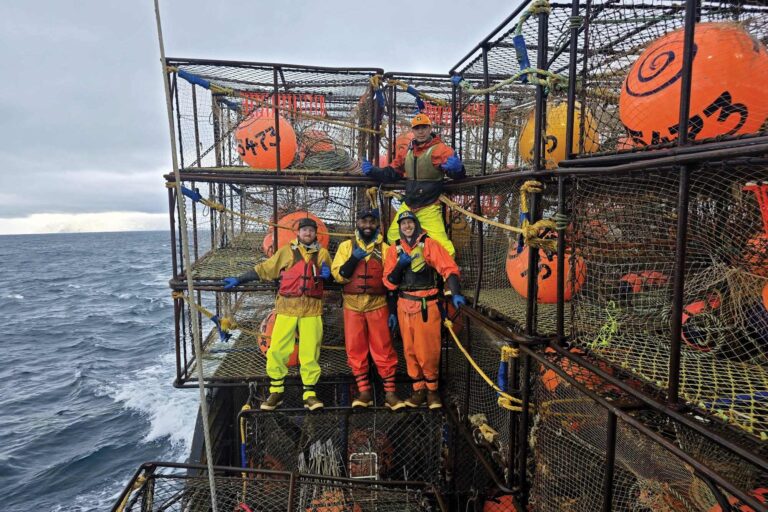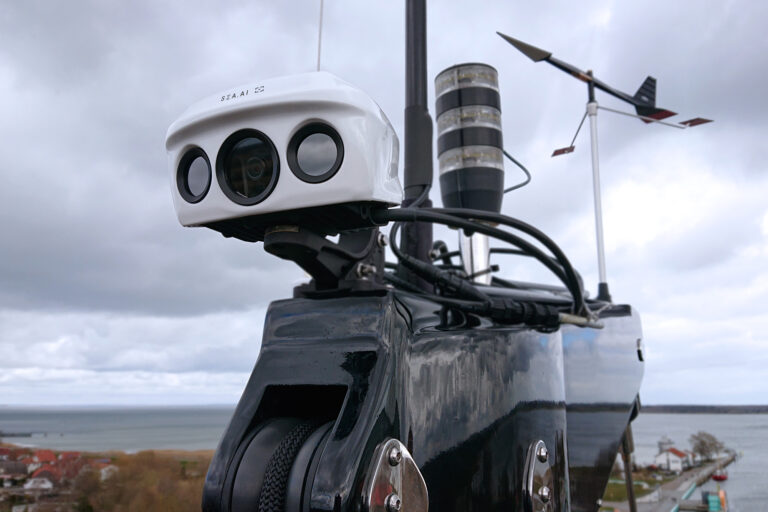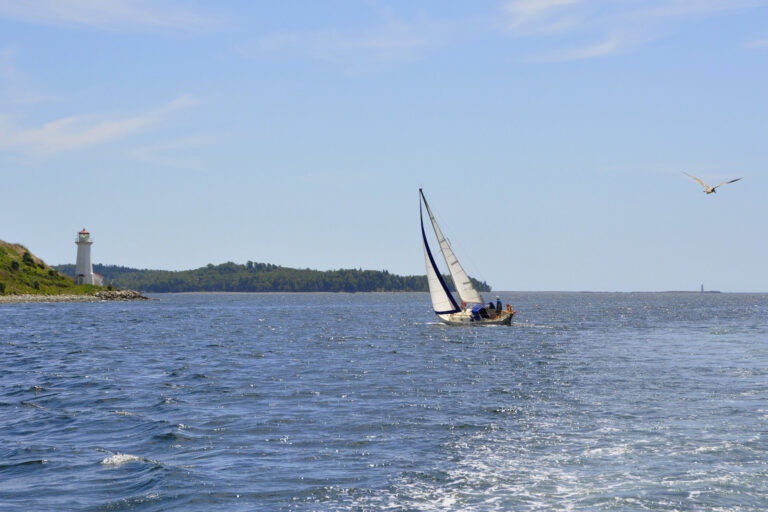
For a venue to introduce the Beneteau 46.1, the latest model in the long-running Oceanis line, as well as a few other new sailboats to North America, the French builder chose Fort Adams, in Newport, Rhode Island, hosting two days of press and dealer sea trials just prior to the opening of the Newport International Boat Show last September. This was not your usual dog-and-pony presentation. Think instead Westminster Dog Show meets Kentucky Derby. And needless to say, the Pascal Conq-designed 46-footer was dressed to the nines for her debut.
While mainstream builders once used demo boats and long lists of factory-installed or aftermarket options to draw in customers, nowadays, new models arrive packed with extras in order to make a splash. In the case of the 46.1, the lengthy list of upgrades included Nordac cruising sails from North; electric Harken winches; a sporty bowsprit/anchor roller for the furling code zero; an in-mast furling mainsail; a cockpit arch to keep the mainsheet up and out of the way; and a full suite of B&G instruments. Oh, and I almost forgot: a swing-out barbecue and sink, built into the transom and adjacent to the fold-down swim platform.
To put it all in perspective, the base price of the 46.1 is right around $320,000. The boat we got to sail in Newport, and which CW‘s Boat of the Year judges inspected a few weeks later at the U.S. Sailboat Show in Annapolis, Maryland, carried a price tag of $520,000. That, if nothing else, demonstrates the wide range of factory customization that is now possible with a production boat.
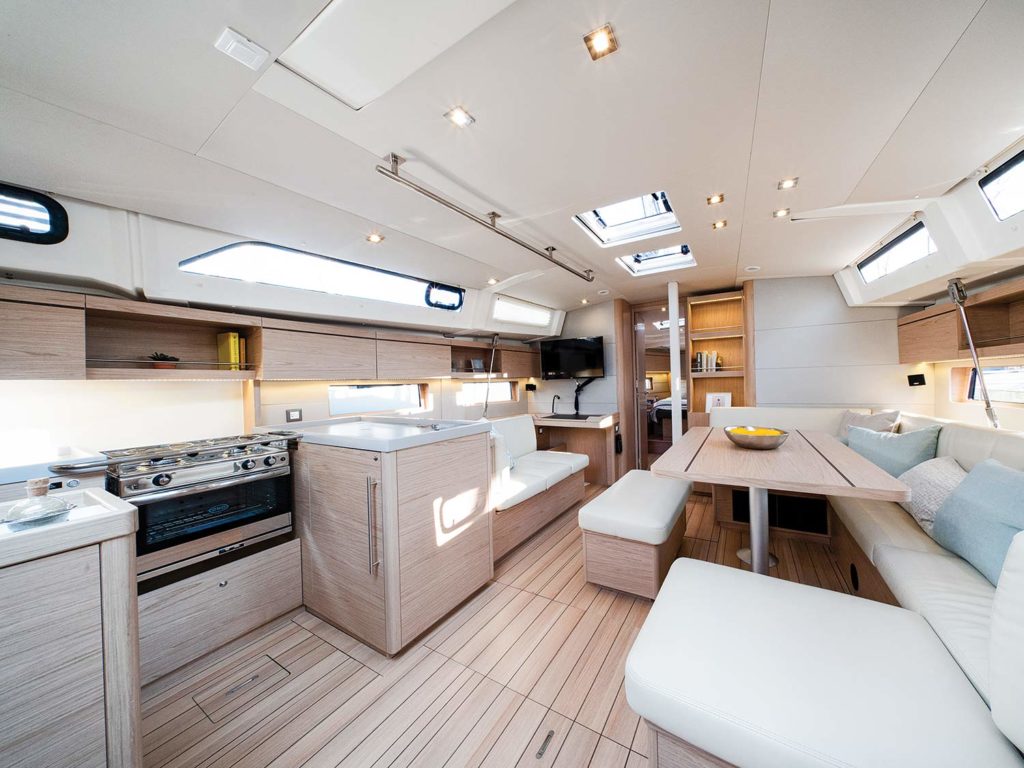
I got to jump aboard the 46.1 in both locations, and up front, I’ll admit our test sails did not involve a hands-on inspection of the open-air galley described above. But what they did include were chances to experience a couple of quite enjoyable spells at the helm. On Chesapeake Bay, in about 10 knots of breeze with the 107 percent genoa unfurled, we tacked upwind at 7.6 knots. Cracked off to a reach, with the code zero set, our speed hovered right around 9 knots. On and off the wind, the twin wheels felt silky smooth, sheets were close at hand and there was plenty of room in the back of the cockpit to move from side to side. “On this boat, they’ve got twin rudders, and they certainly answered adequately,” noted judge Tim Murphy.
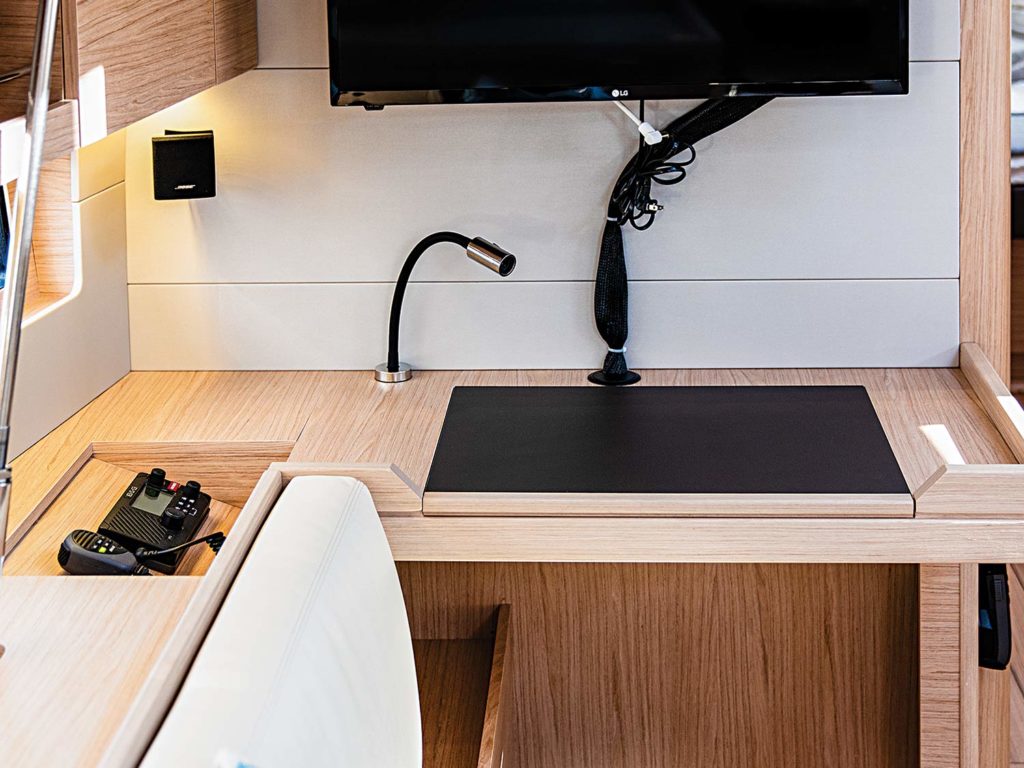
In the 46.1 for instance, the added volume is most evident in the forward owner’s cabin, where to either side of the island queen berth there is room at the foot of the bed to stand, and outboard of that, there’s still more room for two sets of shelves by the in-hull ports. The cabin also features two hanging lockers and separate shower and head compartments, one to port, the other to starboard.
The boat we visited had a three-cabin, two-head layout, which I thought would be quite usable for a couple who sails occasionally with friends or family aboard. A well-equipped and roomy L-shaped galley was to port at the foot of the companionway; opposite was the second head with an attached stall shower.
Forward to starboard was a large dining table with U-shaped seating, and opposite, a couch. In a nod to the manner in which many navigate these days, the interior design team at Nauta chose to forego the traditional nav station. Instead, just forward of the couch up against the bulkhead, there was a small desk sized for a laptop computer, and above it, a flat screen display.
For those with more frequent guests, there is also a three-cabin, three-head version of the 46.1, in which the galley is pushed farther forward into the saloon, replacing the couch to port. Charter owners, meanwhile, have the option of splitting the forward cabin into two en suite doubles, or even having five cabins and three heads. In this layout, double bunks replace the starboard head aft.
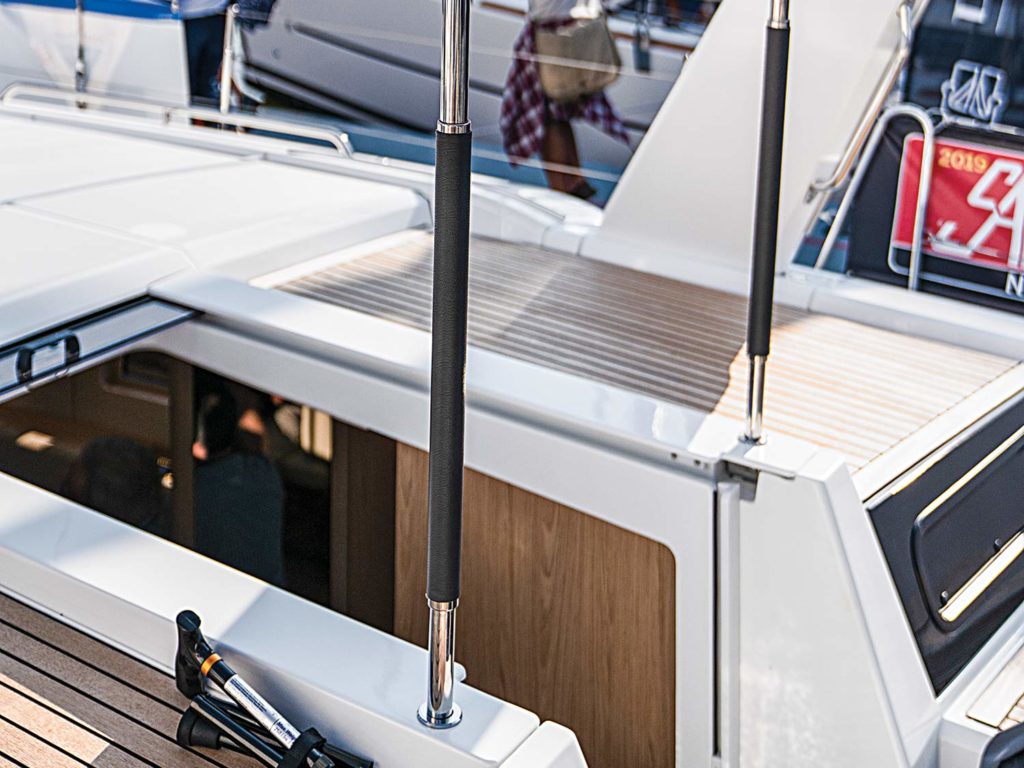
Topside, there are numerous options, too. First, consider the rig. The standard is a 66-foot-8-inch aluminum mast. A performance spar that’s 3-foot taller is available in aluminum or carbon fiber, and there is an Intracoastal Waterway-friendly 63-foot-6-inch stick as well.
Underwater, there are three possible keels: shoal (5 feet, 9 inches), deep (7 feet, 9 inches), both cast iron, or a cast iron and lead performance foil (8-foot-8-inch draft).
Other choices include a 57 hp (standard) or 80 hp Yanmar diesel; additional water or fuel tankage; a self-tacking jib or 107 percent genoa; and the aforementioned cockpit arch. And then there is a range of finish choices below and several possible equipment packages. Honestly, it’s a bit overwhelming to ponder.

To my mind, though, whoever checked off the boxes for the boat we sailed got it right. I found the cockpit to be both roomy and functional. I liked the wide sunbeds to either side of the companionway and the stout stainless-steel poles between the arch and cabin top that provided really good handholds when going below. A centerline drop-leaf table that can accommodate eight crew was set up with a refrigerator compartment forward and life-raft storage aft and under, a detail that caught the eye of ever-safety-conscious BOTY judge Alvah Simon. He noted it’s right where you’d want it to be, down low in the cockpit, where you could pull it out and deploy it overboard from the transom.
The wide side decks were easy to navigate — though the judges did wonder about the midship cleats being placed well aft — and we all liked the idea of raised bulwarks for better footing when heeled. Mostly though, it was a rewarding boat to sail, and that’s the whole point. Right?
Mark Pillsbury is CW’s editor.
Beneteau Oceanis 46.1 specifications
| LENGTH OVERALL | 47’11” (14.61 m) |
| WATERLINE LENGTH | 43’5” (13.23 m) |
| BEAM | 14’9” (4.50 m) |
| DRAFT (Standard/Shoal) | 7’9”/5’9” (2.36/1.75 m) |
| SAIL AREA (100%) | 920 sq. ft. (85.5 sq m) |
| BALLAST (Standard/Shoal) | 6,028/6,746 lb. (2,734/3,060 kg) |
| DISPLACEMENT | 23,356 lb. (10,594 kg) |
| BALLAST/DISPLACEMENT | 0.26/0.29 (Standard/Shoal) |
| DISPLACEMENT/LENGTH | 127 |
| SAIL AREA/DISPLACEMENT | 18 |
| WATER | 98 gal. (371 l) |
| FUEL | 53 gal. (201 l) |
| HOLDING (per head) | 21 gal. (80 l) |
| MAST HEIGHT | 66’8” (20.32 m) |
| ENGINE (Standard/Option) | 57 hp/80 hp Yanmar |
| DESIGNER | Conq/Nauta |
| PRICE | $520,000 |
Beneteau
410-990-0270
beneteau.com
Sea Trial
| WIND SPEED | 10 to 12 knots |
| SEA STATE | Light chop |
| SAILING | Closehauled 7.6 knots, Reaching 8.9 knots |
| MOTORING | Cruise (2,200 rpm) 6.9 knots, Fast (2,800 rpm) 8 knots |

